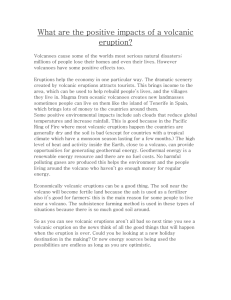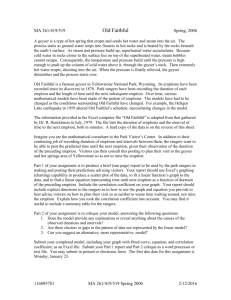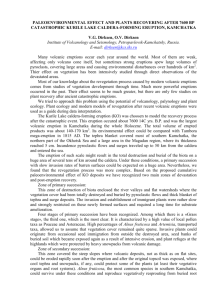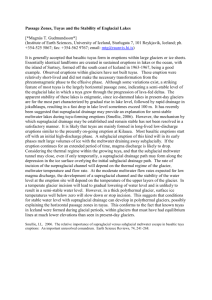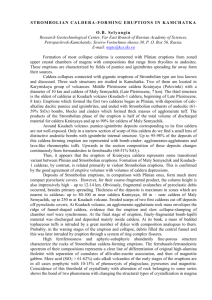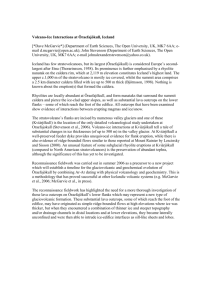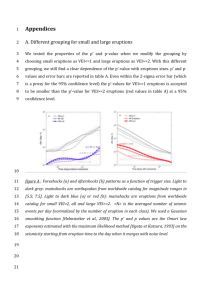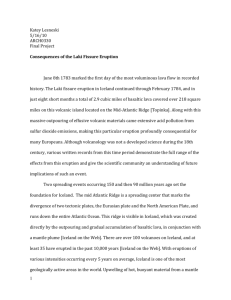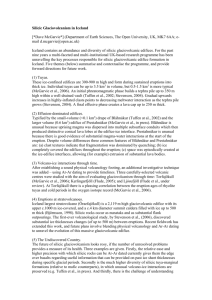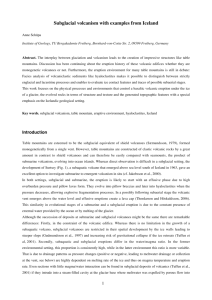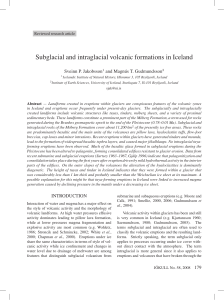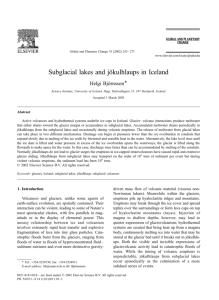doc
advertisement
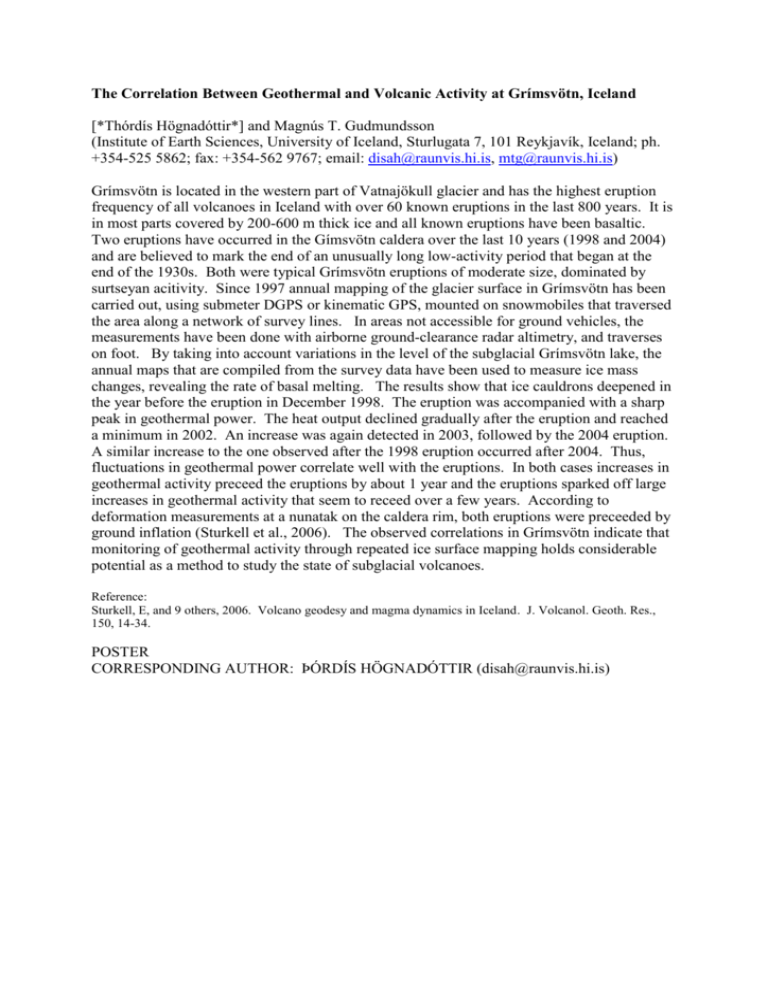
The Correlation Between Geothermal and Volcanic Activity at Grímsvötn, Iceland [*Thórdís Högnadóttir*] and Magnús T. Gudmundsson (Institute of Earth Sciences, University of Iceland, Sturlugata 7, 101 Reykjavík, Iceland; ph. +354-525 5862; fax: +354-562 9767; email: disah@raunvis.hi.is, mtg@raunvis.hi.is) Grímsvötn is located in the western part of Vatnajökull glacier and has the highest eruption frequency of all volcanoes in Iceland with over 60 known eruptions in the last 800 years. It is in most parts covered by 200-600 m thick ice and all known eruptions have been basaltic. Two eruptions have occurred in the Gímsvötn caldera over the last 10 years (1998 and 2004) and are believed to mark the end of an unusually long low-activity period that began at the end of the 1930s. Both were typical Grímsvötn eruptions of moderate size, dominated by surtseyan acitivity. Since 1997 annual mapping of the glacier surface in Grímsvötn has been carried out, using submeter DGPS or kinematic GPS, mounted on snowmobiles that traversed the area along a network of survey lines. In areas not accessible for ground vehicles, the measurements have been done with airborne ground-clearance radar altimetry, and traverses on foot. By taking into account variations in the level of the subglacial Grímsvötn lake, the annual maps that are compiled from the survey data have been used to measure ice mass changes, revealing the rate of basal melting. The results show that ice cauldrons deepened in the year before the eruption in December 1998. The eruption was accompanied with a sharp peak in geothermal power. The heat output declined gradually after the eruption and reached a minimum in 2002. An increase was again detected in 2003, followed by the 2004 eruption. A similar increase to the one observed after the 1998 eruption occurred after 2004. Thus, fluctuations in geothermal power correlate well with the eruptions. In both cases increases in geothermal activity preceed the eruptions by about 1 year and the eruptions sparked off large increases in geothermal activity that seem to receed over a few years. According to deformation measurements at a nunatak on the caldera rim, both eruptions were preceeded by ground inflation (Sturkell et al., 2006). The observed correlations in Grímsvötn indicate that monitoring of geothermal activity through repeated ice surface mapping holds considerable potential as a method to study the state of subglacial volcanoes. Reference: Sturkell, E, and 9 others, 2006. Volcano geodesy and magma dynamics in Iceland. J. Volcanol. Geoth. Res., 150, 14-34. POSTER CORRESPONDING AUTHOR: ÞÓRDÍS HÖGNADÓTTIR (disah@raunvis.hi.is)

